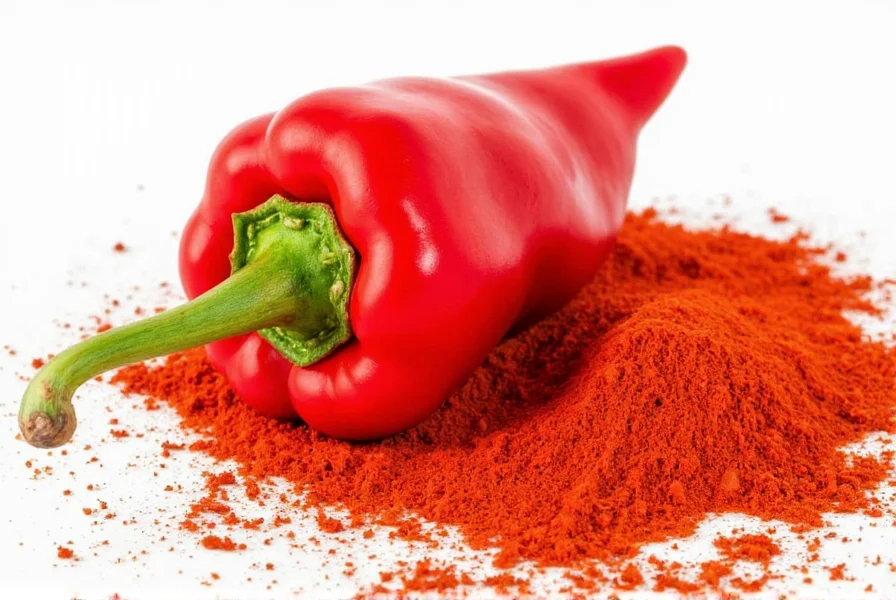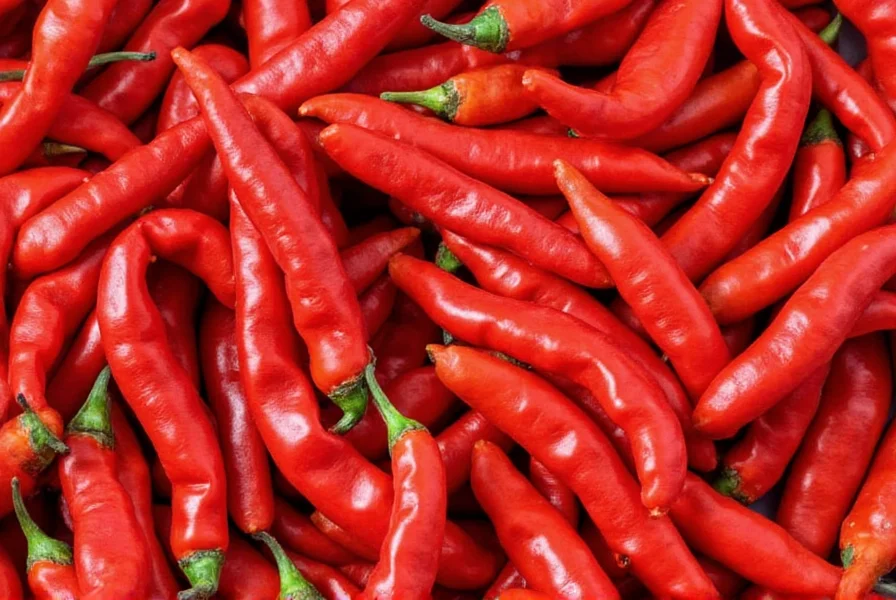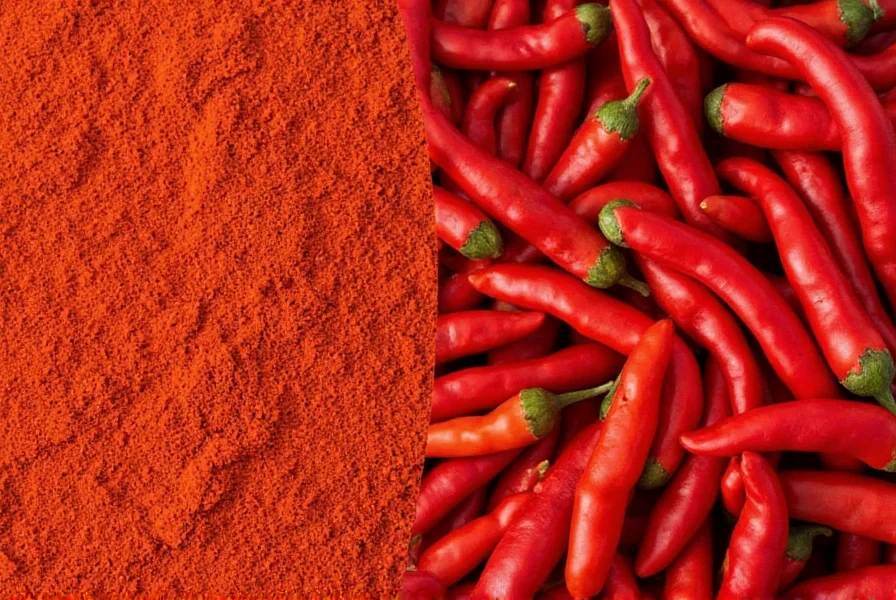When exploring is cayenne and red pepper the same, many home cooks encounter confusion in recipes. This misunderstanding can dramatically affect dish outcomes, as these spices differ significantly in heat intensity and flavor composition. Let's clarify these common kitchen staples with precise botanical and culinary distinctions.
What Exactly Is Cayenne Pepper?
Cayenne pepper comes from specific cultivars of Capsicum annuum, typically the slender, tapering chilies measuring 2-5 inches long. Named after the city in French Guiana, authentic cayenne registers between 30,000–50,000 Scoville Heat Units (SHU), placing it firmly in the medium-hot category. When dried and ground, it becomes the bright red powder commonly found in spice racks.
True cayenne maintains consistent heat and flavor characteristics, making it valuable for recipes requiring precise spiciness. Its flavor profile features earthy, slightly fruity notes with a clean, sharp heat that builds gradually. Professional chefs rely on pure cayenne when they need predictable heat levels in sauces, rubs, and spice blends.

Decoding “Red Pepper”: A Misleading Term
The term “red pepper” creates significant confusion because it lacks botanical specificity. In culinary contexts, “red pepper” usually refers to crushed red pepper — a commercial blend of various dried, crushed chilies. This mixture commonly includes:
- Cayenne peppers (providing primary heat)
- Serrano peppers (adding sharper heat)
- Red jalapeños (contributing milder warmth)
- occasionally bell peppers (adding color without heat)
Unlike pure cayenne, crushed red pepper's heat level varies significantly between brands and batches. This inconsistency explains why substituting one for the other often yields unpredictable results in cooking. Understanding the difference between cayenne pepper and red pepper prevents recipe disasters.
| Characteristic | Cayenne Pepper | Crushed Red Pepper |
|---|---|---|
| Primary Composition | Single pepper variety (C. annuum cultivars) | Mixture of various dried chili types |
| Heat Level (SHU) | 30,000–50,000 (consistent) | 5,000–30,000 (variable) |
| Flavor Profile | Earthy, slightly fruity, clean heat | Complex, variable depending on blend |
| Texture | Fine, uniform powder | Coarse flakes with visible seeds |
| Culinary Use | Precise heat control in sauces, rubs | General seasoning, pizza, pasta |
Heat Comparison: Why the Distinction Matters
When considering cayenne vs red pepper heat level, the difference becomes critical for recipe success. Pure cayenne delivers reliable, medium-high heat that builds steadily. Crushed red pepper's heat fluctuates based on its blend composition — sometimes mild, occasionally surprisingly hot.
Professional kitchens avoid substituting these interchangeably for this reason. A dish calling for 1/4 teaspoon of cayenne might become inedibly hot with the same amount of certain crushed red pepper blends, or disappointingly mild with others. This variability explains why understanding are cayenne and red pepper interchangeable matters for consistent results.
Practical Substitution Guidance
If you need to substitute between these spices, follow these evidence-based recommendations:
- Replacing cayenne with crushed red pepper: Use 1.5–2 times the amount, but add gradually while tasting. Expect less predictable heat.
- Replacing crushed red pepper with cayenne: Start with half the amount and adjust carefully. Pure cayenne will deliver more consistent but potentially stronger heat.
- For precise heat control: Always use pure cayenne when recipes specify exact measurements.
When exploring can I substitute cayenne for red pepper, remember that while possible, substitutions require careful adjustment. The reverse substitution (red pepper for cayenne) carries higher risk of over-spicing.

Common Misconceptions Clarified
Several persistent myths surround these spices. Let's address the most frequent confusion points regarding is cayenne pepper the same as crushed red pepper:
- Myth: “Red pepper” means the same as cayenne in all contexts Fact: Outside specific regional usage, “red pepper” almost always means the blended crushed variety
- Myth: They can be used interchangeably cup-for-cup Fact: Their differing heat concentrations make direct substitution unreliable
- Myth: The terms are used consistently across all recipes Fact: Recipe authors often use these terms imprecisely, requiring cook interpretation
Final Clarification: Making Informed Choices
Understanding what is the difference between cayenne and red pepper flakes empowers better cooking decisions. When shopping, check labels carefully — “Cayenne Pepper” should list only that ingredient, while “Crushed Red Pepper” will contain multiple chili varieties.
For recipes demanding precise heat control like hot sauces or spice blends, pure cayenne delivers reliability. For general seasoning of pizzas, pastas, or Mediterranean dishes, crushed red pepper provides traditional flavor complexity. Recognizing these distinctions transforms confusing spice cabinet choices into confident culinary decisions.
Frequently Asked Questions
Is cayenne pepper hotter than red pepper?
Yes, pure cayenne pepper is typically hotter than most crushed red pepper blends. Cayenne measures 30,000-50,000 SHU consistently, while crushed red pepper (a blend) usually ranges from 5,000-30,000 SHU depending on its specific composition. The variability in crushed red pepper means some batches might approach cayenne's heat, but generally cayenne delivers more reliable and intense heat.
Can I use red pepper instead of cayenne in recipes?
You can substitute crushed red pepper for cayenne, but use 1.5-2 times the amount and add gradually while tasting. Since crushed red pepper's heat varies significantly between brands, this substitution requires careful adjustment. For recipes requiring precise heat control (like hot sauces), pure cayenne is preferable for consistent results.
Why do recipes sometimes use cayenne and red pepper interchangeably?
Many recipes use these terms imprecisely due to regional naming differences and general consumer confusion. Some cooks consider them synonymous, though technically they're distinct. Professional recipes typically specify precisely which they require, while casual recipes might use the terms interchangeably, potentially causing inconsistent results for home cooks.
Does cayenne pepper contain red pepper?
Pure cayenne pepper contains only cayenne chili peppers. However, crushed red pepper blends almost always contain cayenne as one component among other chili varieties. This is why the confusion exists — cayenne is frequently an ingredient in red pepper blends, but not all red pepper is cayenne.
How can I tell if my red pepper is actually cayenne?
Check the ingredient label. If it says “Cayenne Pepper” with no other ingredients, it's pure cayenne. If it says “Crushed Red Pepper,” “Red Pepper Flakes,” or lists multiple chili varieties, it's a blend. Pure cayenne will have a fine, uniform powder texture, while crushed red pepper shows visible flakes and seeds from multiple pepper types.











 浙公网安备
33010002000092号
浙公网安备
33010002000092号 浙B2-20120091-4
浙B2-20120091-4